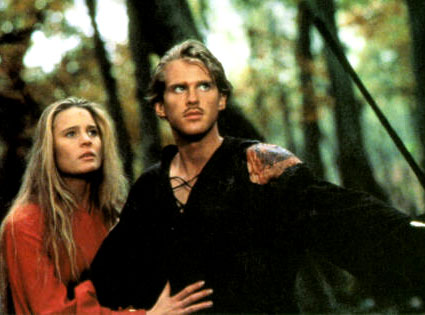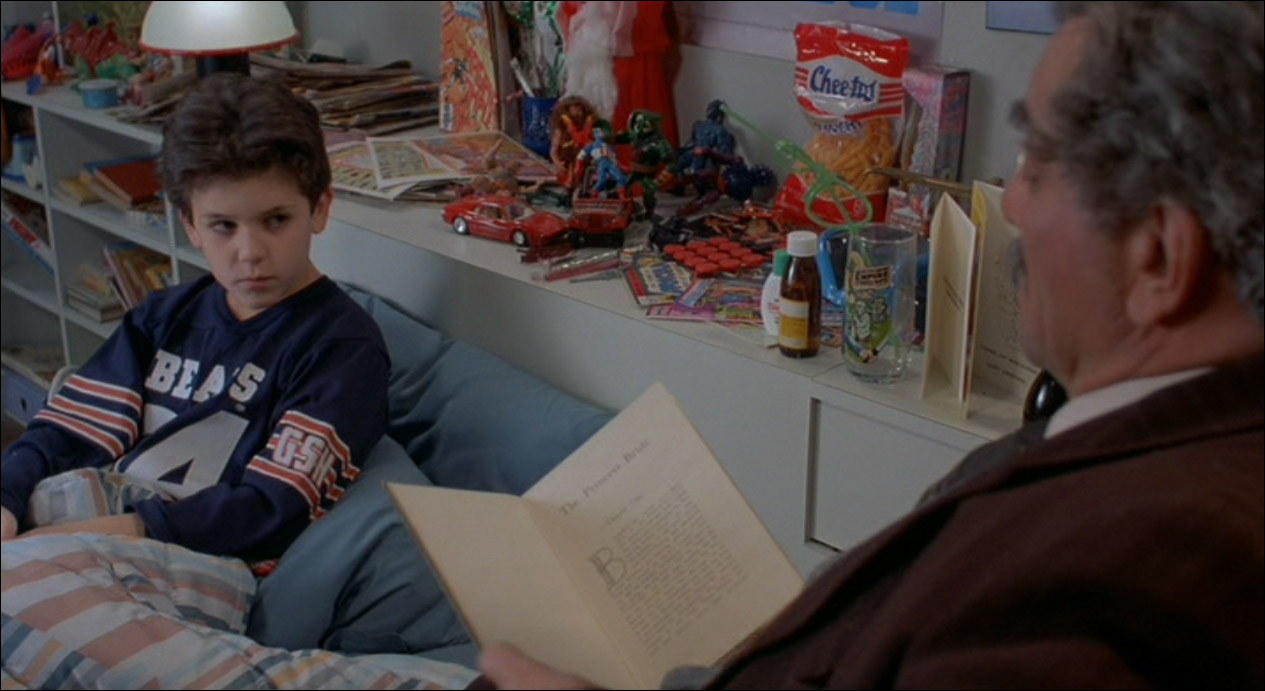Whene ver I find myself struggling to tell a story, I turn to The Princess Bride, a 1987 romantic comedy, fantasy, adventure film based on a 1973 book of the same name. The lines are brilliant, the romance is legendary, the sets are terrible, and, most importantly, it contains the most comprehensive list of storytelling characteristics you’re likely to see in any story ever created. Within this tale of revenge, betrayal, friendship, soul mates, and gravity-defying ’80s hair, you’ll find:
ver I find myself struggling to tell a story, I turn to The Princess Bride, a 1987 romantic comedy, fantasy, adventure film based on a 1973 book of the same name. The lines are brilliant, the romance is legendary, the sets are terrible, and, most importantly, it contains the most comprehensive list of storytelling characteristics you’re likely to see in any story ever created. Within this tale of revenge, betrayal, friendship, soul mates, and gravity-defying ’80s hair, you’ll find:
- Humor and irony: For a story that boasts such an array of events and genres, The Princess Bride has a surprisingly subtle and deft handle on its humor. The dialogue goes from clunky to whip-sharp with an ease that can only be intentional; there’s more irony in its musical score than in a sidestreet café full of hipsters. The more outrageous characters are offset by the screenplay’s innate comedic awareness, and the result is laugh-out-loud funny.
- Character and motive: One of the key aspects of character shown in the film is character motive; you can write the greatest characters of all time, but if they’re not driven by something and if they’re not going anywhere, then they’ll be as flat as the page they’re written on. The characters of The Princess Bride have become iconic in the decades because they’re driven, they stand out, and they’re memorable. They know what they want, and we know it, too. Westley wants to rescue his true love Buttercup before the evil prince can marry her. Even more famously, Inigo wants to avenge the death of his father. The only character who you could say lacks drive is Buttercup, the damsel in distress – but, then again, the fact that Robin Wright also stars as the scheming, ruthless, and powerful Claire Underwood in House of Cards more than makes up for it.

- Drama and action: The Princess Bride contains, as described at the beginning of the movie, everything from “fencing, fighting, torture, revenge, giants, monsters” to “chases, escapes, true love, miracles.” But just because it’s centered on action sequences and satirical drama doesn’t mean that the traits of this tale can’t be applied to other forms of storytelling. Whether you’re writing a play about romance or a poem about a war, creating an engaging narrative is always essential, and that’s something The Princess Bride excels at.

- Literary devices: Sometimes, literary devices can seem old-fashioned, unnecessary, or irrelevant outside of end-of-year essays. Sometimes, we don’t even notice them. The Princess Bride, on the other hand, not only uses, but embraces, literary devices. It’s framed — and even interrupted — by a grandfather reading The Princess Bride book to his reluctant grandson. The same type of framing can be seen in the novel Wuthering Heights, but The Princess Bride shows that framing and devices can still be enjoyable and integral parts of a story today. It shows that all those classes you spent learning about – and possibly all those hours you spent steering well away from – literary devices may have a place in modern storytelling after all.

- Intelligence: More than anything else, The Princess Bride is a smart story. Not smart in the way we normally think: dressed in a white lab coat or buried in a math equation. It’s emotional and comedic human intelligence — self-aware and self-deprecating and never really taking itself too seriously. There’s a reason that The Princess Bride is still talked about decades after its release. It’s a fairy tale with intellect; it’s about understanding the characters, understanding the audience, and, above all, understanding the story.
So, the next time you’re struggling to tell a story, take a look at The Princess Bride. It may help you. It may not. Either way, you’ll have seen a great story unfold, and, best of all, you’ll have been able to call it research.
